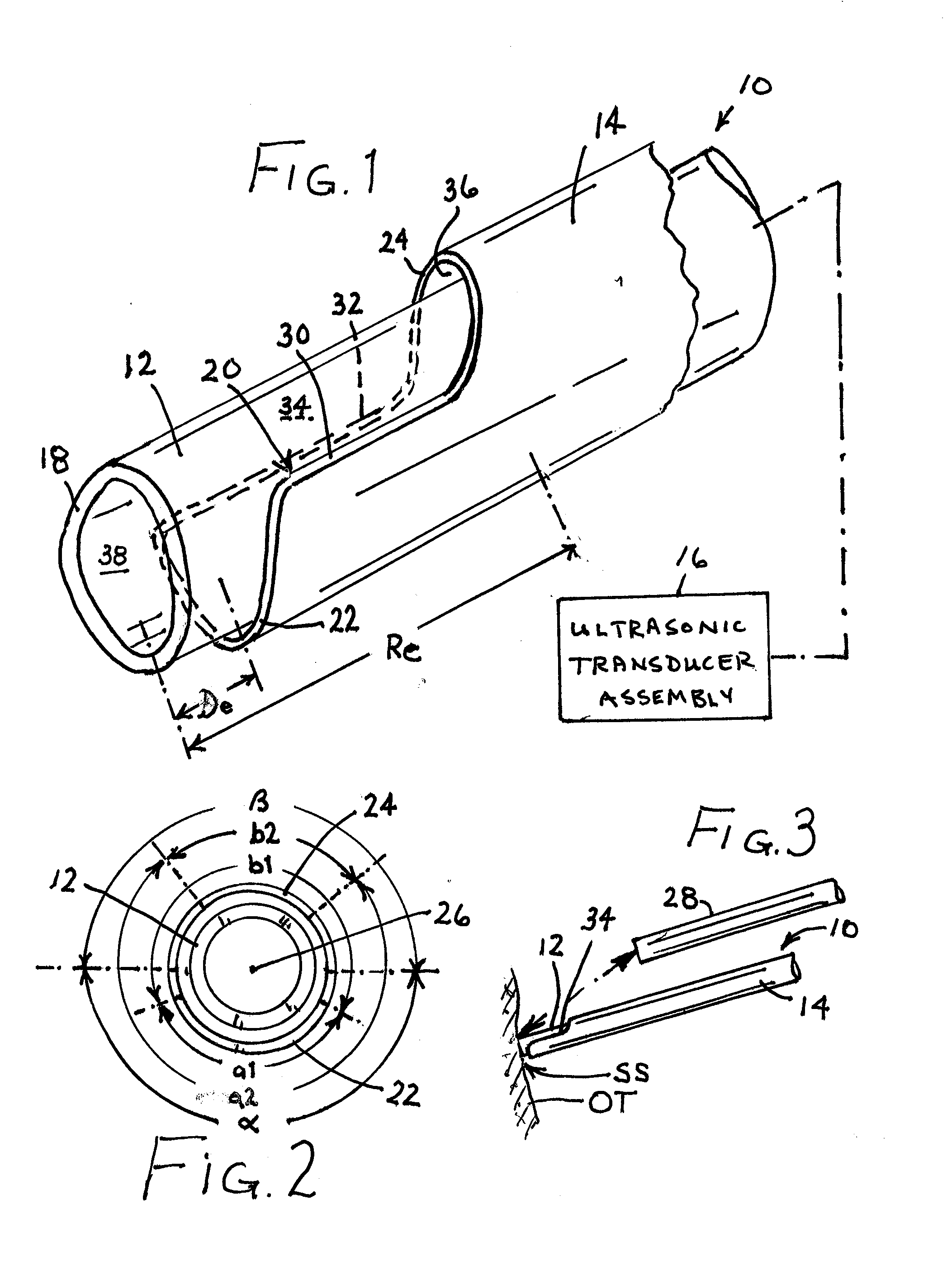Protective sleeve and associated surgical method
a protective sleeve and surgical method technology, applied in the field of ultrasonic surgical instruments, can solve the problems of increasing the risk of unwanted probe-tissue contact, less effective bluet straight probe removal of hard eschar buildup during wound healing, etc., and achieve the effect of improving the visibility of the unprotected area of the prob
- Summary
- Abstract
- Description
- Claims
- Application Information
AI Technical Summary
Benefits of technology
Problems solved by technology
Method used
Image
Examples
Embodiment Construction
[0020]As depicted in FIG. 1, an ultrasonic surgical instrument assembly 10 comprises an elongate substantially rigid probe 12 and an elongate tubular sheath member 14. Probe 12 is operatively connected at a proximal end to a source 16 of ultrasonic mechanical vibrations and has a distal tip 18 configured for transmitting ultrasonic vibration energy into organic tissues OT (FIG. 3). Probe 12 longitudinally traverses sheath member 14.
[0021]Sheath member 14 has a distal edge 20 with a first portion 22 on one side of probe 12 and a second portion 24 on an opposite side of the probe. Edge portion 22 is located distally of edge portion 24 and is therefore disposed substantially closer than edge portion 24 to distal tip 18 of probe 12. Sheath edge portion 24 is so spaced from probe distal tip 18 as to permit effective visualization of the distal tip during use of the instrument assembly 10.
[0022]Edge portion 22 of sheath distal edge 20 is typically spaced a distance De of between 1 mm and ...
PUM
 Login to View More
Login to View More Abstract
Description
Claims
Application Information
 Login to View More
Login to View More - R&D
- Intellectual Property
- Life Sciences
- Materials
- Tech Scout
- Unparalleled Data Quality
- Higher Quality Content
- 60% Fewer Hallucinations
Browse by: Latest US Patents, China's latest patents, Technical Efficacy Thesaurus, Application Domain, Technology Topic, Popular Technical Reports.
© 2025 PatSnap. All rights reserved.Legal|Privacy policy|Modern Slavery Act Transparency Statement|Sitemap|About US| Contact US: help@patsnap.com


